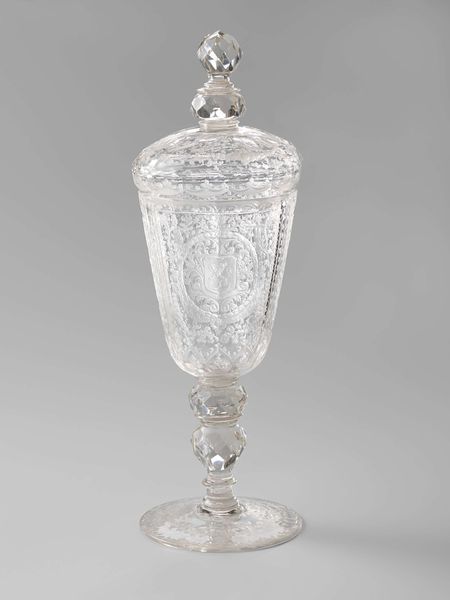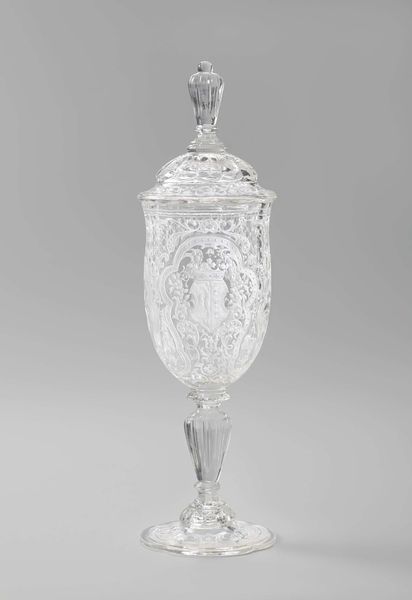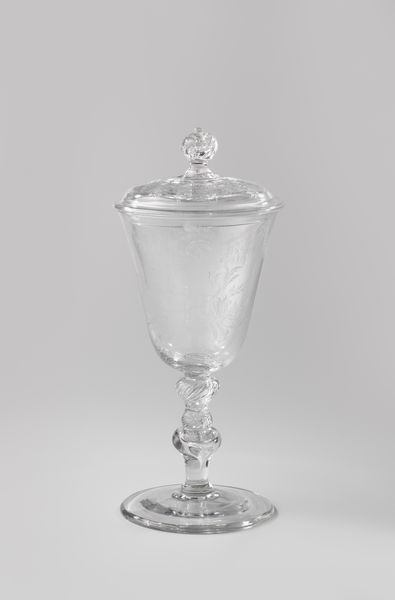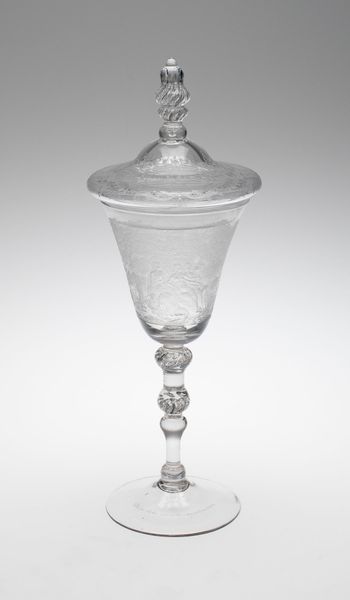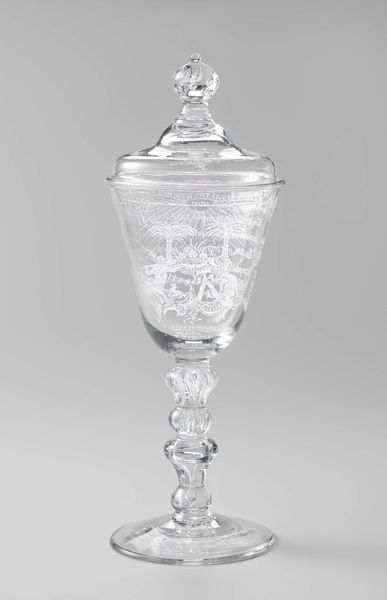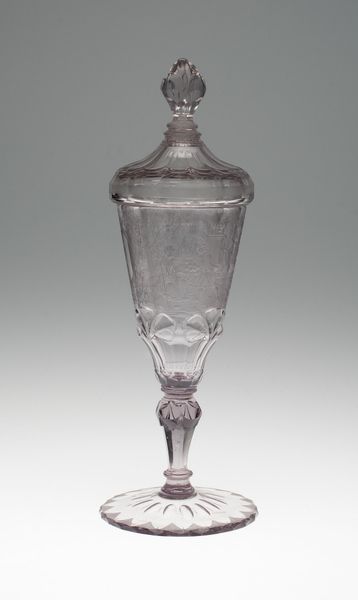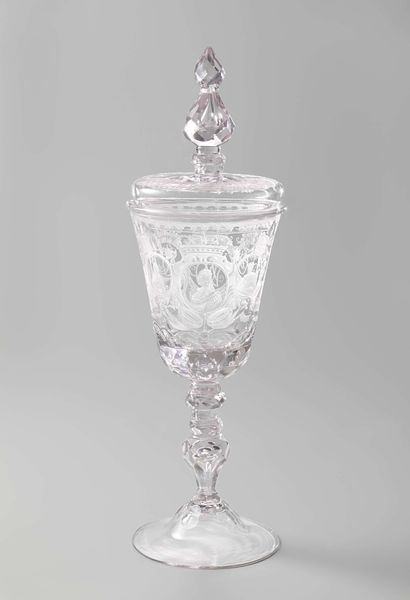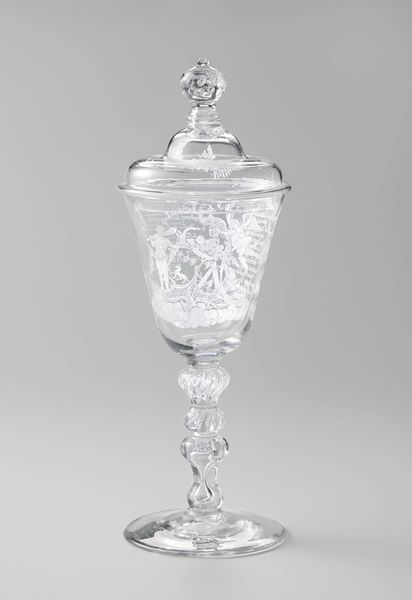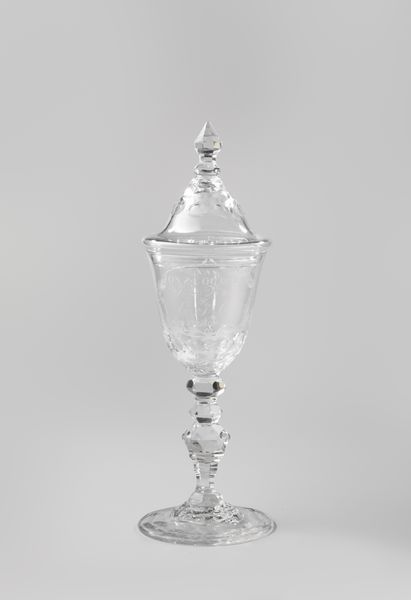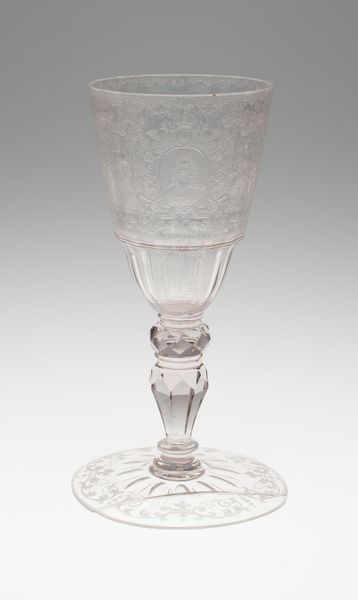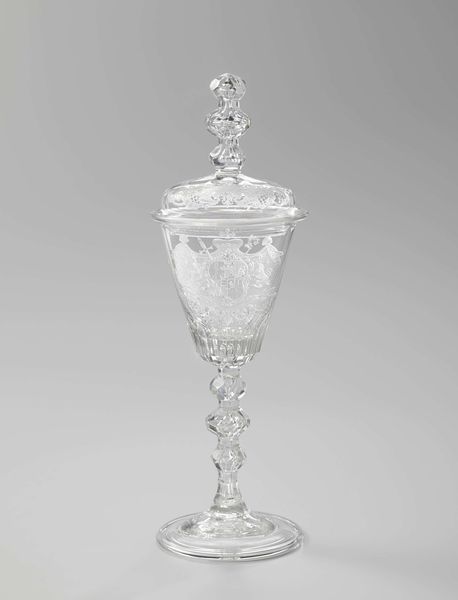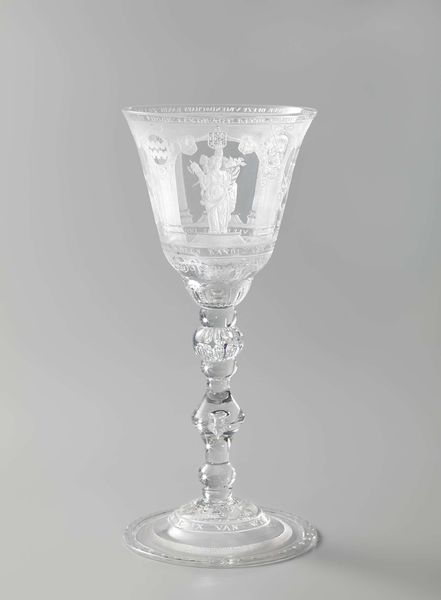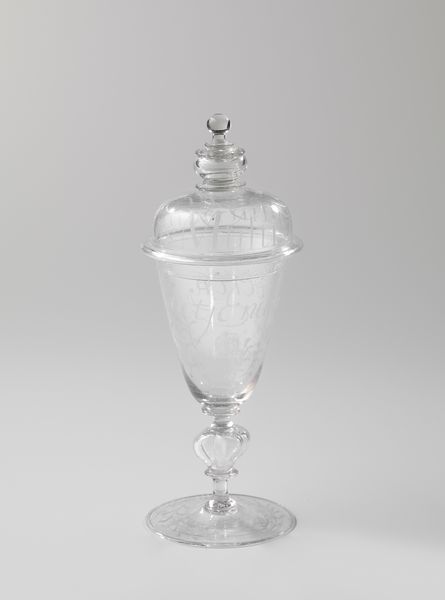
Lidded wine glass with the Huis Rupelmonde in Loenen aan de Vecht c. 1700 - 1720
0:00
0:00
glass
#
baroque
#
glass
#
ceramic
#
decorative-art
Dimensions: height 35.5 cm, diameter 11.9 cm
Copyright: Rijks Museum: Open Domain
Curator: What a dazzling object! This lidded wine glass, crafted from glass sometime between 1700 and 1720, depicts the Huis Rupelmonde in Loenen aan de Vecht. Editor: My first impression is one of restrained opulence. It's all about controlled brilliance. The craftsmanship! Look at the clarity, the way light fractures across its surface. It's not merely functional; it’s sculptural. Curator: Indeed. This type of ornate glass emerged during the Baroque period, a time when elaborate decorative arts were used to project wealth and status. Owning something as exquisitely rendered as this wine glass was a social statement. Editor: Observe how the engraved imagery wraps the body of the glass, creating an almost cinematic panorama. The structural integrity of the glass and the precise articulation of these images combine technical prowess with artistic vision. Curator: The Huis Rupelmonde itself had significance; such stately homes represented the flourishing Dutch Republic. Depicting this location visually associated the owner of the glass with civic pride and prosperity. This choice wasn't arbitrary. Editor: Absolutely. The lack of colour only accentuates its inherent geometry: The sphere of the bowl is mirrored in the dome of the lid, which rises toward that sharp, jewel-like finial. Notice, too, how that progression vertically elevates the piece beyond pure utility. Curator: What this object represented was about prestige in the nascent Dutch republic: carefully manufactured objects like this provided their owners an entry into elevated social circles by broadcasting one's taste. This piece isn't solely about containing wine, it’s about cultivating societal allegiances. Editor: Ultimately, whether intended as a conversation piece, a display of skill, or a reflection of its owner’s world, the beauty here comes from that tension of material and intention. What was the relationship between aesthetic pleasure and the broader society it once inhabited? Curator: These kinds of decorative objects reflect how artistic output functions to project wealth, social connection and power throughout the Dutch Golden Age. Editor: A singular viewing experience has reminded us that studying decorative objects requires keen eyes and critical frameworks.
Comments
rijksmuseum about 2 years ago
⋮
This wine glass is an example of vessels produced in Germany for the Dutch market. In French this type is known as verre de commande. A print of the manor house of Rupelmonde in Loenen served as the model for the engraving. This print was sent to Silesia, where the image was engraved on the glass. The view is accompanied by typical Silesian scrollwork ornament. Translation of inscription: The Well-being of Rijpelmonde.
Join the conversation
Join millions of artists and users on Artera today and experience the ultimate creative platform.
